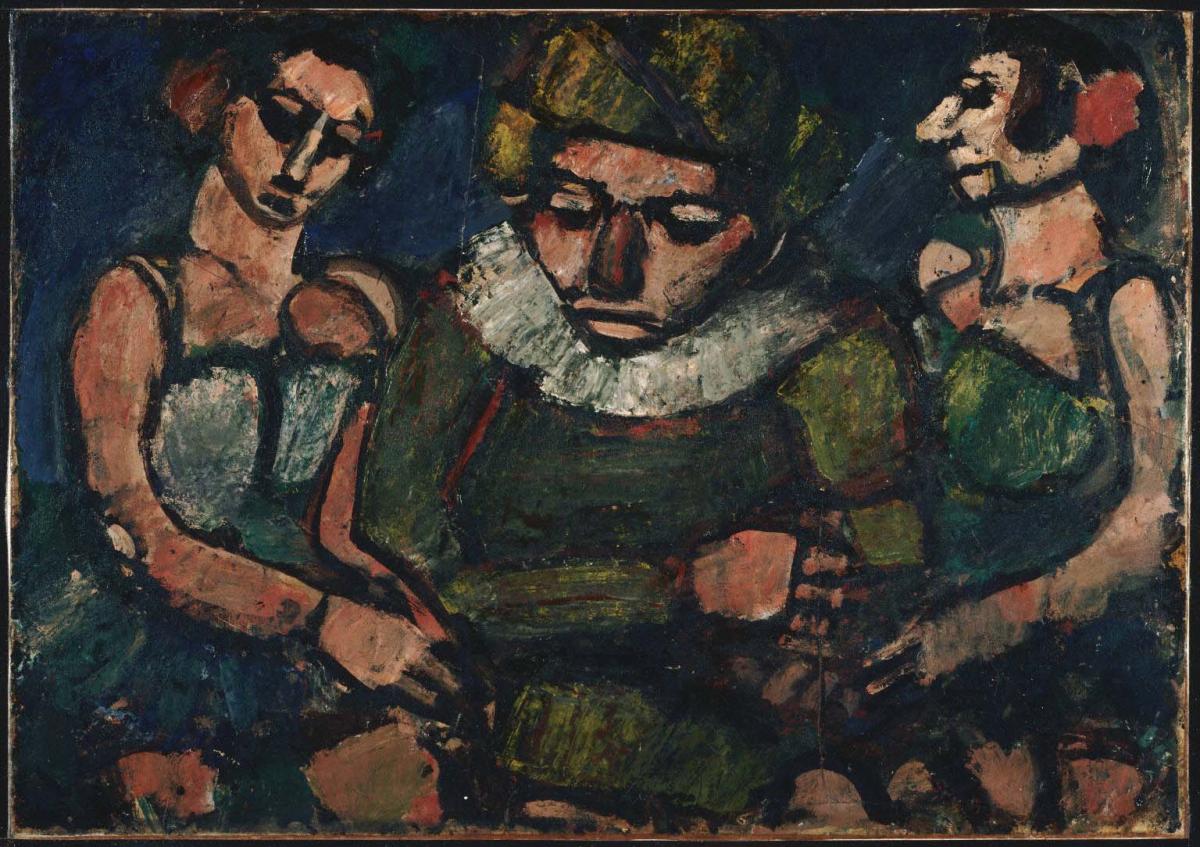Circus Trio
Georges Rouault ( 1924 )

Circus Trio displays the somber tones of Georges Rouault’s mid-career. The circus figures, which first appeared in 1903, are rooted in the spirit of the small travelling circuses that visited the suburban Paris of his childhood. Rouault was intrigued by the contrast between the clown’s “scintillating” costume and ostensibly happy demeanor, and his private life “of infinite sadness,” which he saw reflected in all people: “I saw quite clearly that the ‘clown’ was me, was us, nearly all of us… We are all more or less clowns.” For Rouault the clown was a symbol of human weakness and vulnerability, of false hopes and unfulfilled dreams.
In Circus Trio a male clown is flanked by two circus girls, or écuyères. They display a solemn and resigned expression, unlike the playful circus characters of the 1940s, or those of the early years of the century in which Rouault’s angrier judgment of human nature is revealed through loose, frenetic brushwork. The painting’s muted greens, blues and reds distinguish Rouault’s style from the bright paintings of his fauve peers and also differ from the Byzantine colors of the later works.